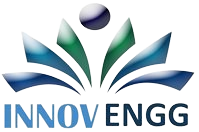The concept of a circular economy has gained significant traction in recent years as a sustainable alternative to the traditional linear economy model. In a linear economy, products are designed, manufactured, used, and discarded as waste. However, a circular economy aims to minimize waste and maximize the value of resources by keeping products, materials, and resources in use for as long as possible. This paradigm shift has profound implications for the field of engineering, requiring a reevaluation of design principles and a commitment to creating products with a focus on longevity, recyclability, and environmental impact.
I. Understanding the Circular Economy
A. Key Principles
Design for Durability: Unlike the planned obsolescence often seen in linear economies, circular design emphasizes creating products that are durable and have a longer lifespan.
Modularity and Upgradability: Designing products with modular components enables easy repairs and upgrades, extending the life of the product and reducing overall waste.
Material Selection and Recycling: Choosing materials that are easy to recycle or biodegradable is essential in a circular economy. Engineers must consider the entire lifecycle of materials, from extraction to disposal.
B. Life Cycle Assessment (LCA)
Assessing Environmental Impact: Engineers need to conduct thorough life cycle assessments to understand the environmental impact of a product from raw material extraction to end-of-life disposal.
Quantifying Resource Use: LCA helps in quantifying resource consumption, energy use, and emissions throughout a product’s life cycle, enabling designers to identify areas for improvement.
II. Case Studies in Circular Design
A. Electronics Industry
Designing Upgradable Devices: Exploring how companies are embracing modular design in smartphones and laptops to reduce electronic waste and encourage device longevity.
E-Waste Recycling Initiatives: Highlighting innovative recycling programs that retrieve valuable materials from electronic waste, contributing to a circular economy.
B. Fashion Industry
Cradle-to-Cradle Fashion Design: Discussing how fashion brands are adopting cradle-to-cradle design principles, using materials that can be easily recycled or returned to the environment without harm.
Clothing Rental and Resale Platforms: Examining the rise of rental and resale platforms that extend the life of clothing items, reducing the need for constant production and consumption.
III. Challenges and Opportunities in Circular Engineering Design
A. Technological Barriers
Technological Innovation Requirements: Discussing the need for advanced technologies to facilitate disassembly, recycling, and the extraction of valuable materials from products.
Integration of IoT and AI: Exploring how the integration of Internet of Things (IoT) and Artificial Intelligence (AI) can enhance circular design by enabling predictive maintenance and efficient resource utilization.
B. Regulatory Landscape
Evolving Regulations: Highlighting the role of government policies and regulations in shaping the circular economy landscape, and how they influence engineering design practices.
Global Collaboration: Discussing the importance of international collaboration to establish consistent standards and regulations for circular design across industries.
IV. Future Outlook
A. The Role of Education and Awareness
Educating Engineers: Emphasizing the need for incorporating circular economy principles into engineering curricula to prepare the next generation of engineers for sustainable design practices.
Raising Consumer Awareness: Discussing the role of consumer awareness in driving demand for circular products and influencing companies to adopt circular design practices.
B. Innovation and Collaboration
Cross-Industry Collaboration: Highlighting the benefits of collaboration between industries, academia, and governments to share knowledge, resources, and best practices in circular engineering design.
Innovation Hubs and Incubators: Discussing the emergence of innovation hubs and incubators focused on circular design, supporting startups and established companies in developing sustainable solutions.
Designing for the circular economy represents a transformative shift in engineering practices, requiring a holistic approach that considers environmental impact, resource efficiency, and product longevity. While challenges exist, the opportunities for innovation and positive environmental impact are immense. As engineers continue to embrace the principles of the circular economy, they contribute to a more sustainable and resilient future, where products are designed not just for the present but with a mindful eye on the future.

